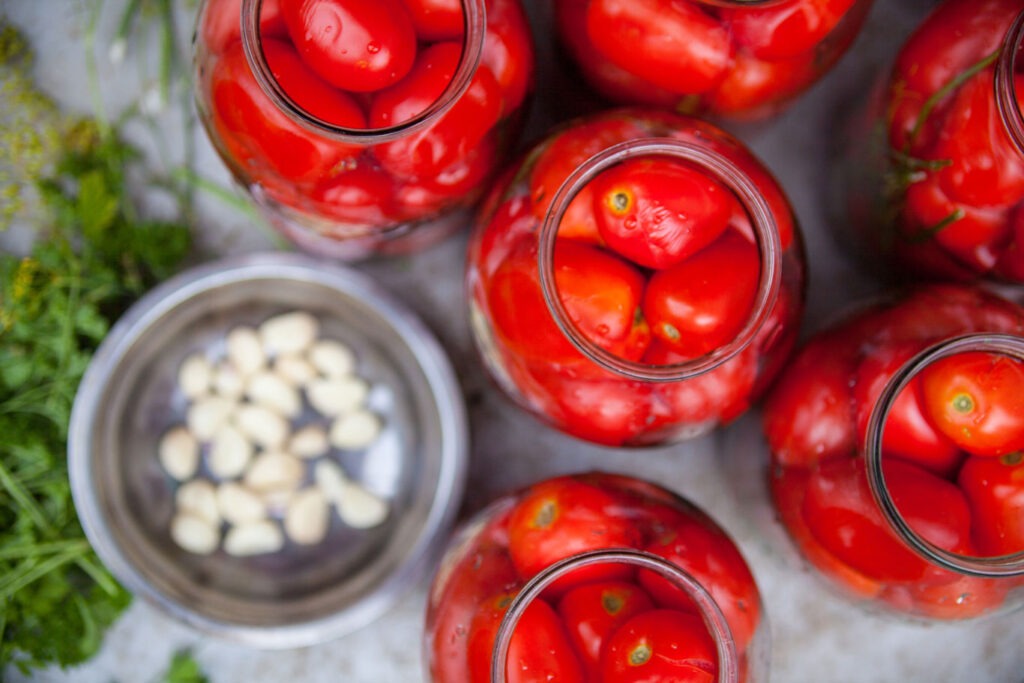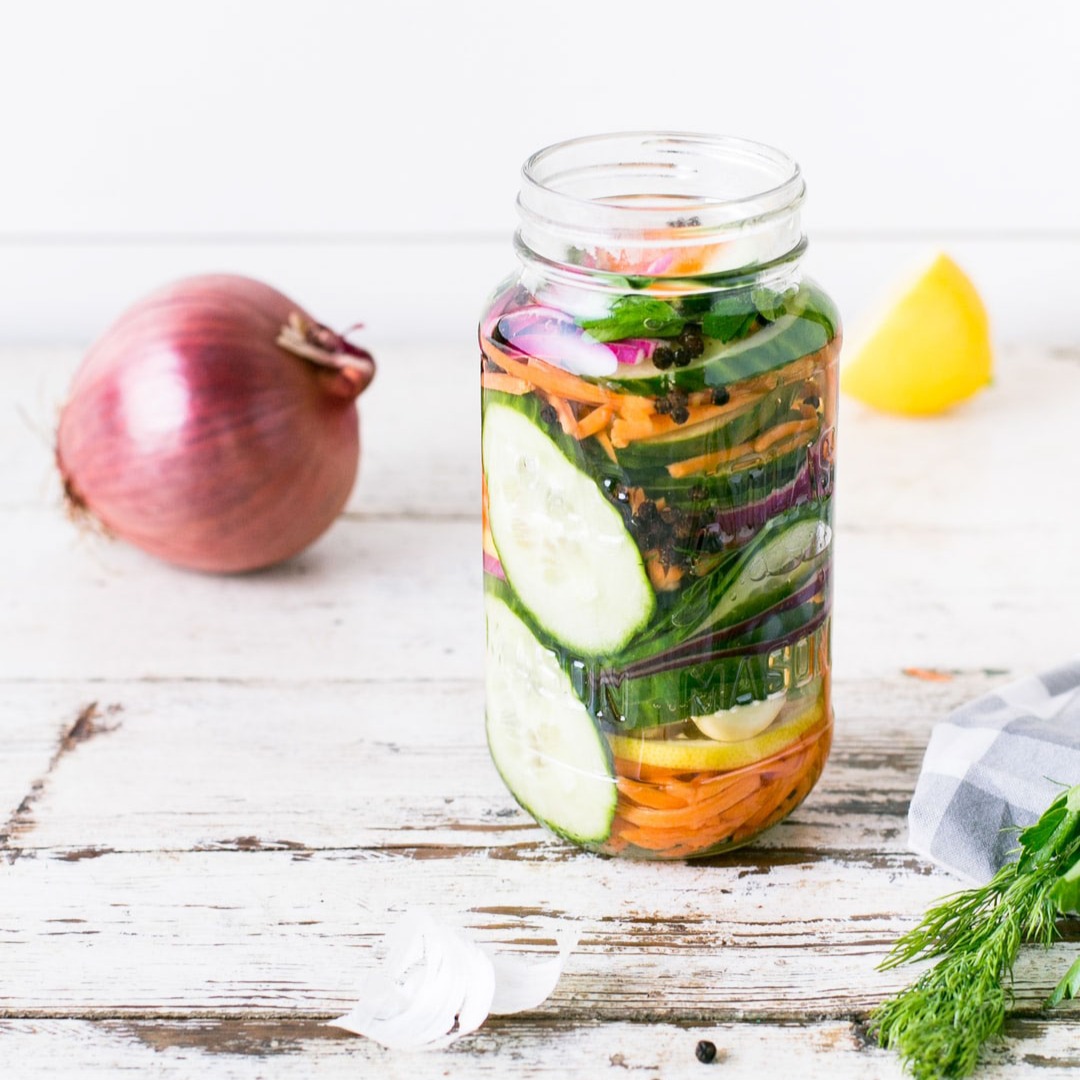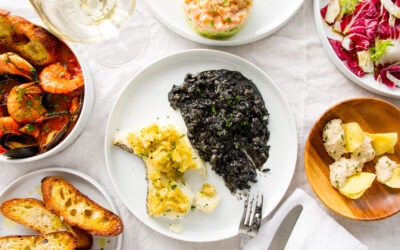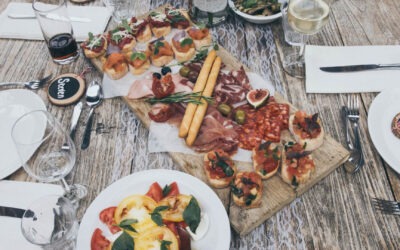
Pickling and Preserving with Emma
If you drive through a community in which many residents are of Italian descent, you may catch a number of open garage doors revealing a full-fledged canning operation between late August and mid-September. The idea is to take advantage of the abundance of late summer produce and preserve them for the bleak winter months ahead.
For the most part, you’ll see bushels Roma tomatoes being washed, cut, cooked and jarred. All to be stored in one’s cantina until the snow hits and ripe, flavourful vegetables are nothing but a distant memory. Sometimes, you may even see a pile or two of bell peppers, zucchini, and eggplant charred on a grill or fermenting in a pillowcase, then preserved in olive oil and vinegar.
We’re lucky to live in an era where we can preserve some of the best produce in the world (lookin’ at you Italy!) at their peak of freshness and import it to North American grocery stores in pretty, rustic looking packaging. It’s as delicious as it is convenient. And it looks great in on a shelf. Though we very much encourage you to purchase all of the amazing products we bring in – because they’re awesome and we put a lot of time and effort into sourcing, importing, and distributing them – we also don’t want to take away from the beauty that is creating something from scratch yourself. Food these days has become almost too convenient, and subsequently, every year, we pass by fewer and fewer garage operations.

At Emma Foods, we’re just as enthusiastic about the cooking process as we are eating the final product. Pickling and preserving is an art form we don’t want to see die out anytime soon. Doing it yourself is incredibly satisfying, and not as complicated as you would think. We’ve scaled down a lot of classic recipes to work for approximately 500 ml – 1L jars. No garage space necessary, and this way you can prepare a variety of items that won’t take up too much space in your teeny apartment pantry. If this isn’t the case for you, feel free to double, triple, or even quadruple the recipes for an even bigger haul.

A lot of the information we’ve compiled has come from anywhere and everywhere, though mostly from the experience and wisdom passed down from generations of Nonni. Also, of course, from our Quality Assurance department to prevent any unwelcome bacteria from ruining your day. Below are a few points to keep in mind to make sure you get the most out of your pickling and preserving experience:
What’s the difference between a pickle and a preserve?
- Pickles are usually uncooked vegetables packed in vinegar. The acidity in the vinegar keeps the food from spoiling.
- Preserves are fully cooked vegetables packed in oil.
- Salt is also an important preserving agent. Though for the majority of our recipes, we use it for enhancing flavour.
How to prep the vegetables:
- First thing’s first: never pack anything raw in oil, because raw vegetables can harbor bacteria on their surfaces (even if they’re washed), and oil doesn’t have the same disinfectant properties as vinegar.
- Ensure all vegetables are cleaned, cut and dried before cooking.
- Cut off any blemishes or brown spots.
- Keep the size more or less consistent so that everything cooks evenly.
Which jars are best?
- Find yourself some broad mouth canning jars. There are two types:
- Screw Cap, also called Mason Jars – The glass jar is reusable, but the lids are a one shot deal. Always ensure you use a fresh set of lids for every recipe. These are great for beginners, because it’s easy to tell weather or not the can is sealed.
- Metal Clip – best for large scale recipes. Make sure the gasket (rubber ring) is in firm and tight, not flimsy and fraying. This is an essential part of the jar, ensuring an airtight seal.
How important is sterilizing the empty jars?
- Sterilization is important if you plan to store your pickles / preserves in the pantry and keep them for longer than a month. If you keep them in the fridge from the beginning, it’s not as important.
- We’re lucky to have a dishwasher with a “sanitize” option, and we take full advantage of it. Remove one jar at a time as needed after the completed cycle, keeping the dishwasher door closed.
- Another method is to bring a large pot of water to a boil and submerging the open jars and boiling for 15 minutes. Removing only when they’re ready to be filled.
- This being said, take care with the mason jar lids, if they get too hot the metal may warp and it won’t seal correctly.
What is the deal with sealing the jars after they’re filled?
- It’s important to ensure the jars seal to lock in freshness.
- You’ll know the jar is sealed on a mason jar if the lid is flat across the top and it doesn’t make that “pop” sound when you press it.
- The easiest, most efficient way to seal the jars is to fill, then attach the lids and flip them upside down and let them cool. In our experience, this method has worked very well in sealing our pickles and preserves, especially if the food, the jar and the lid are still hot.
- Though it is of course better to be safe than sorry, and to ensure an extra tight seal, use the “boiling” method, in which you simmer the submerged jars for 10 minutes in a large pot of water, over a canning rack.
- Be sure to do your research and decide which method works best for you. The quicker you plan on eating the product, the less effort you have to put towards sealing the jars. If you’re still unsure, you can always store everything in the fridge and consume within two weeks so that nothing goes to waste.
How to store a half eaten jar?
- Store open jars in the fridge, they’ll be good for approximately 5-7 days
- If it’s a preserve (i.e. food packed in oil), cover with at least 1 cm of oil to submerge
Pickling and preserving foods are a work in progress, no result will ever be the same as the one before. Enjoy the process of perfecting a favourite recipe, it will only improve with time. (Literally!)
More Posts
Cooking Project: The Feast of the Seven Fishes
Every holiday season, in your favourite foodie media, you’ll see a version of this classic Italian-(North) American meal served on Christmas Eve. You should know that Italians from Italy are unfamiliar with “The Feast of the Seven Fishes”. It’s very much an Italian...
#EmmaFeeds x The Toonie Challenge
Feeding hungry children one toonie at a time! We're excited to announce that we are sponsoring Toonies for Tummies, a campaign to help provide food for children in communities in Ontario and Western Canada through school nutrition programs. From January 29th until...
Some Notes on Entertaining
Looking to entertain friends and family? Follow our entertaining tips for your next dinner party! Warm olives in the microwave before serving. It softens the skin and brings out the flavor. Add some very thin slices of lemon to brighten things up. Don’t throw away...



